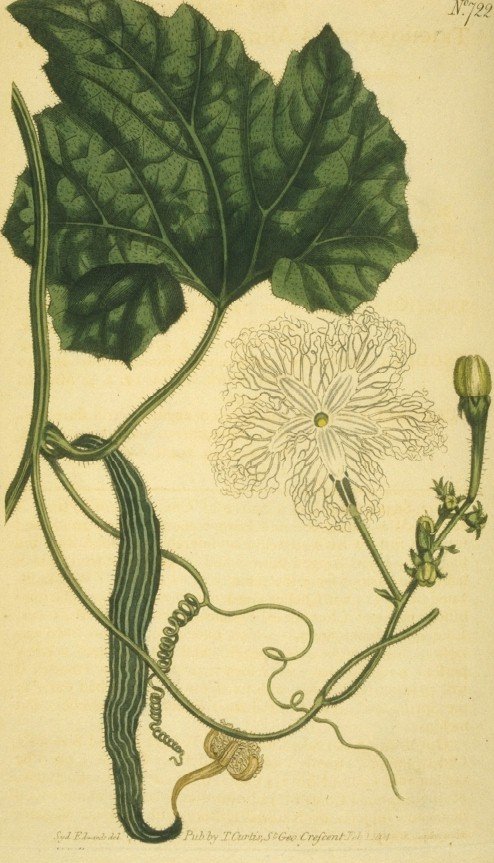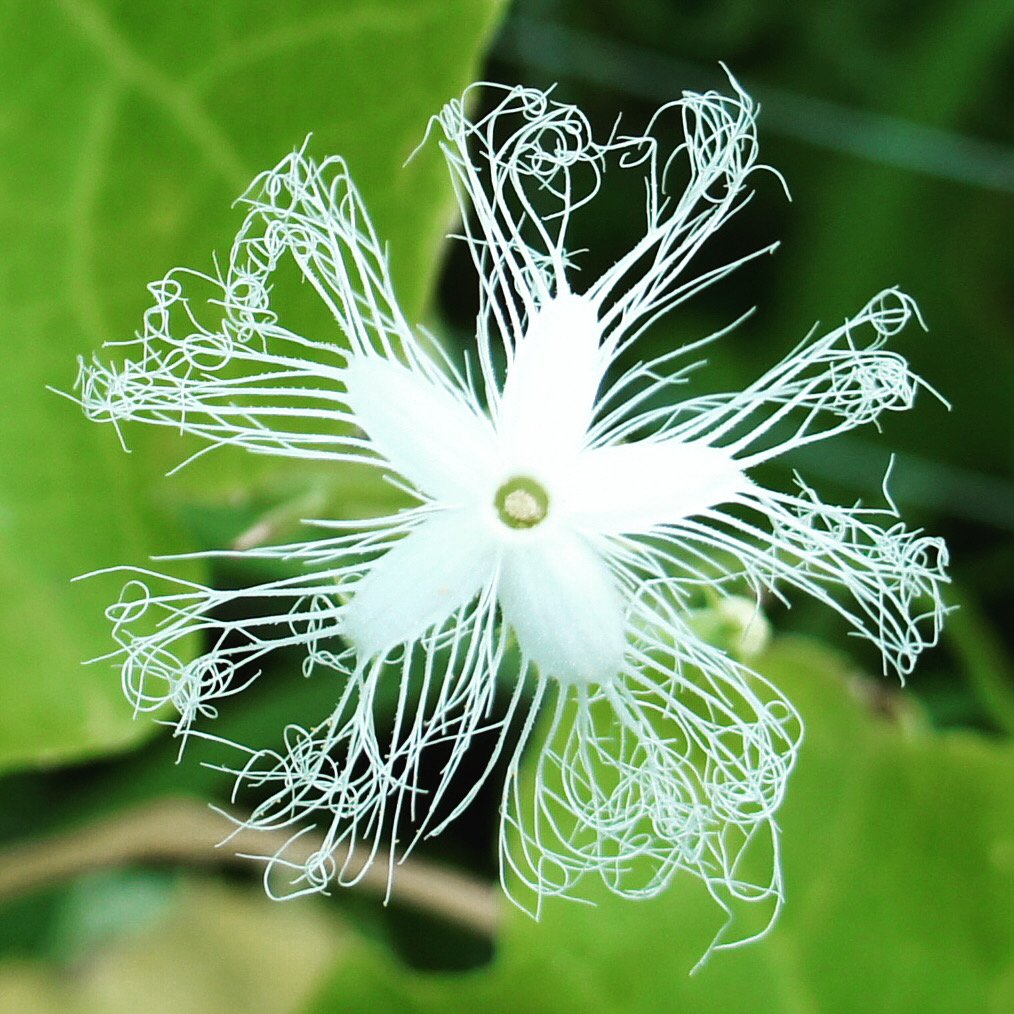Snake Gourd


Snake Gourd
SNAKE GOURD SEEDS
Trichosanthes cucumerina var. anguina
Unrelated to the decorative gourds that most of us are familiar with, this Snake Gourd is a tropical species native to Asia. It was domesticated for agricultural use in India, and is a popular food in several countries of Southeast Asia and Africa. Only the very young fruits are considered for vegetable use, and they should absolutely be cooked prior to consumption. The taste and texture are pleasant, similar to a cucumber or jicama. They make a fine chutney. Like Momordica charantia, the gel surrounding the seeds turns bright red at maturity, and can be used sparingly to color and flavor rice.
Snake Gourd is used not only as a vegetable, but also medicinally in various modalities of both India and China. Fruits may possess anti-diabetic and anti-HIV properties similar to the much less palatable Momordica charantia. Studies have found that this species may have potential as a powerful chemotherapeutic agent in the treatment of cancer. Notably, the trichosanthin procured from the roots of this species is employed as an abortifacient and is listed as such in the modern pharmacopoeia of China. Careful research is recommended.
If none of this sounds particularly appealing, that's just fine. Because this species has a flower of such unparalleled beauty as to render the fruits completely superfluous. You may pick them for the sole purpose of encouraging more flowers.
The flower of the Snake Gourd is typically night-blooming, moth-pollinated, highly fragrant and exquisitely fringed. They are a magical ephemeral, and deserve a place in every garden. The flowers of this selection bloom throughout the early morning as well, providing better opportunities to mingle in absolute awe.
Growing Snake Gourds requires a hot summer climate. Vines can grow to 20' and require a sturdy trellis. Consider growing them up and over an arched trellis, beneath which the fruits will hang to dramatic effect, or training them horizontally like grapes, where the flowers will be more accessible to eyes and noses.
Snake Gourd seeds are notoriously difficult, and even the best lots of seed have relatively poor germination. Expect about half of the seeds to germinate. You may consider using pliers to very gently, just barely, crack some of the hulls to increase the likelihood of germination. Be sure to apply pressure to the ruffled edges only, not the flat belly of the seed.
Start seeds indoors, at least 6 weeks before planting outdoors: soak seeds overnight in warm water and tuck seeds about 1/2” below the surface of moist soil, pressing gently to keep seed snug. Mist generously with very warm water and cover with plastic to maintain moisture and temperature. Kept warm (85°F) and moist under bright grow lights, seeds should germinate within 10 days or so. Prick out seedlings as they sprout to grow on in deep 4" or 6" pots at warm temperatures in bright light. Plants grow quickly, and you'll want to grow them in large pots to minimize root disturbance when transplanting, especially if the weather isn't cooperative and you have to keep them indoors for several weeks.
Transplant outdoors into warm soil in full sun when nighttime temperatures are reliably warm. Fertilize and mulch generously for best production.
Packet contains at least 15 seeds.